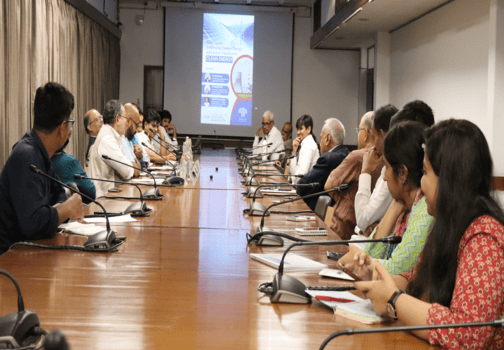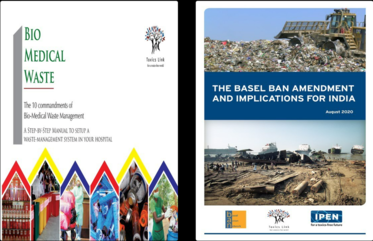LEVEL OF NITRATE IN GROUNDWATER
GOVERNMENT OF INDIA
MINISTRY OF JAL SHAKTI
DEPARTMENT OF WATER RESOURCES,
RIVER DEVELOPMENT & GANGA REJUVENATION
LOK SABHA
UNSTARRED QUESTION NO. 1594
ANSWERED ON 13.02.2025
LEVEL OF NITRATE IN GROUNDWATER
1594. DR. DHARAMVIRA GANDHI SHRI SAPTAGIRI SANKAR ULAKA
SHRI ANTO ANTONY SHRI GAURAV GOGOI
Will the Minister of JAL SHAKTI be pleased to state:
(a) the data on nitrate levels in groundwater in the country during the last five years, districtwise including Sriganganagar and Hanumangarh districts of Rajasthan;
(b) the initiatives taken/being taken by the Government to reduce nitrate contamination caused by agricultural practices, including the use of fertilisers and their impact on water quality;
(c) the steps undertaken/being undertaken by the Government to mitigate contamination from other sources, particularly in severely affected States like Rajasthan, Punjab and Karnataka;
(d) the progress made in expanding the groundwater monitoring network, including the use of digital devices to measure water levels and the expected outcomes of increasing the network to 40,000 wells by 2027;
(e) the Government’s strategy to balance groundwater extraction with replenishment, ensuring sustainable usage, particularly in overexploited regions; and
(f) whether the Government has conducted any studies on the environmental and public health impacts of chemical contamination in groundwater and if so, the details and the outcomes thereof?
ANSWER
THE MINISTER OF STATE FOR JAL SHAKTI(SHRI RAJ BHUSHAN CHOUDHARY)
(a) Central Ground Water Board (CGWB) generates ground water quality data on a regional scale as part of its ground water quality monitoring program annually and for various other scientific studies. The district-wise data on nitrate levels in ground water samples recorded for the years 2019 and 2023 is available at the
following link:
https://cgwb.gov.in/sites/default/files/inlinefiles/percentage_of_samples_nitrate_morethan_permissible_limits_all_states_2023_2019.pdf
According to the recorded data, in Sriganganagar district of Rajasthan, 24% of the samples analyzed
had nitrate beyond the permissible limit (>45 mg/l) in 2019, whereas in 2023 the proportion was 45%.
2 Similarly, in Hanumangarh, the percentage of samples reporting nitrate above permissible limits were 26% in\ 2019 and 56% in 2023 respectively.
(b) The Government is taking several measures to promote sustainable agriculture in the country with a vision to discourage excessive use of chemical fertilizers and promote organic agricultural practices. The Government is implementing Soil Health Management & Soil Health Card Schemes under the National Project on Soil Health & Fertility of National Mission for Sustainable Agriculture since the year 2014-15. Soil health card provides information to farmers on nutrient status of their soil along with recommendations on appropriate dosage of nutrients to be applied for improving soil health and its productivity. Based on the recommendation on Soil Health Card (SHC), so far, 93781 farmer’s trainings and 7425 farmer’s melas/campaigns have been organized across the country for promoting judicious use of chemical fertilizers including secondary and micronutrients in conjunction with organic manures & bio-fertilizers.Further, the Government is also promoting Natural Farming since 2019-2020 through BharatiyaPrakritikKrishi Paddhati (BPKP) programme under Paramparagat Krishi Vikas Yojana (PKVY).The scheme mainly emphasizes on exclusion of all synthetic chemical inputs and promotes on-farm biomass recycling with major stress on biomass mulching, use of cow dung-urine formulations and other plant based preparations.
(c) Water is a state subject and the responsibility of ground water management, including taking initiatives for improving ground water quality and mitigate the contamination issue, lies primarily with the state governments. However, several steps have been taken by the Central Government in this direction like regular quality monitoring and sharing of data by CGWB with state governments and other stakeholders, taking up construction of Arsenic and Fluoride safe wells and disseminating the technology, implementation of Water
(Prevention & Control) Act, 1974 and the Environment (Protection) Act, 1986 by CPCB/SPCBs to prevent and control pollution in water etc.
But the major thrust for safeguarding the entire population of the country from the adverse effects of contaminated water has been provided by the Government by way of implementation of Jal Jeevan Mission (JJM) – Har Ghar Jal, as a novel initiative. JJM is operational in the country since August 2019, including in the states of Rajasthan, Punjab & Karnataka, with a view to make provision of potable tap water supply in adequate quantity, of prescribed quality and on regular & long-term basis to every rural household in the country. Under JJM, Bureau of Indian Standards’ BIS:10500 standards have been adopted as prescribed norms for quality of tap water service delivery and JJM guidelines also stipulate that while allocating the funds to States/ UTs, 10% weightage is to be given to the population residing in habitations affected by chemical contaminants.
(d) Realizing the significance of having high frequency data on ground water on real time basis, this Ministry has taken up the process of installing Digital Water Level Recorders (DWLRs) with telemetry systems throughout the country under its various schemes and projects like Ground Water Management & Regulation (GWM &R) Scheme, Atal Bhujal Yojana etc. The state governments are also funded for carrying out the said activity under National Hydrology Project(NHP). So far, around 24,000 DWLRs have been installed across the country under the above said schemes, which facilitate real-time access to ground water related data.
3 (e) As stated earlier, Water being a State subject, sustainable development and management of groundwater resources is primarily the responsibility of the State Governments. However, the Central Government facilitates the efforts of the State Governments by way of technical and financial assistance through its various schemes and projects. In this direction, the important steps taken by the Ministry of Jal Shakti and other central ministries for sustainable development of ground water resources in the country, with special focus on water
stressed regions, are given below:-
i. The Government is implementing Jal Shakti Abhiyan (JSA) in the country since 2019 which is a mission mode and time bound programme for harvesting the rainfall and taking up water conservation activities. Currently, JSA 2024 is being implemented in the country with special focus on 151 water stressed districts of the country. JSA is an umbrella campaign under which various ground water recharge and conservation related works are being taken up in convergence with various central and state schemes.
ii. CGWB has taken up National Aquifer Mapping and Management Programme (NAQUIM) with an aim to delineate aquifer disposition and their characterization. Entire mappable area of the country of around 25 lakh sq. km has been mapped under the scheme and management plans have been shared with the respective State governments for implementation.
iii. Master Plan for Artificial Recharge to Groundwater- 2020 has been prepared by the CGWB for the entire country and shared with States/UTs providing a broad outline for construction ofaround 1.42 crore rain water harvesting and artificial recharge structures in the country toharness around 185 BCM (Billion cubic meter) of water.
iv. MoJS is implementing Atal Bhujal Yojana, which is a community led scheme for participatoryground water management focusing on demand side management of ground water in 80 water stressed districts in 7 States.
v. Department of Agriculture & Farmers’ Welfare (DA & FW), GoI, is implementing Per DropMore Crop (PDMC) Scheme in the country since 2015-16, which focuses on enhancing wateuse efficiency at farm level through Micro Irrigation and better on-farm water management
practices to optimize the use of available water resources.
vi. Mission Amrit Sarovar was launched by the Government of India which aimed at developing and rejuvenating at least 75 water bodies in each district of the country. As an outcome nearly 69,000 Amrit Sarovars have been constructed/rejuvenated in the country.
(f) Use of Ground Water for drinking purpose having Arsenic, Fluoride, heavy metals etc. above the
permissible limits over a prolonged period of time is known to cause several adverse health effects. As per the information provided by M/o Health & Family Welfare, Arsenic exposure can cause skin lesions, cancer, cardiovascular diseases and developmental effects in children. Likewise, excessive fluoride in the ground water can result in dental and skeletal Fluorosis. Similarly, various other contaminants are known to produce different kinds of adverse effects.






